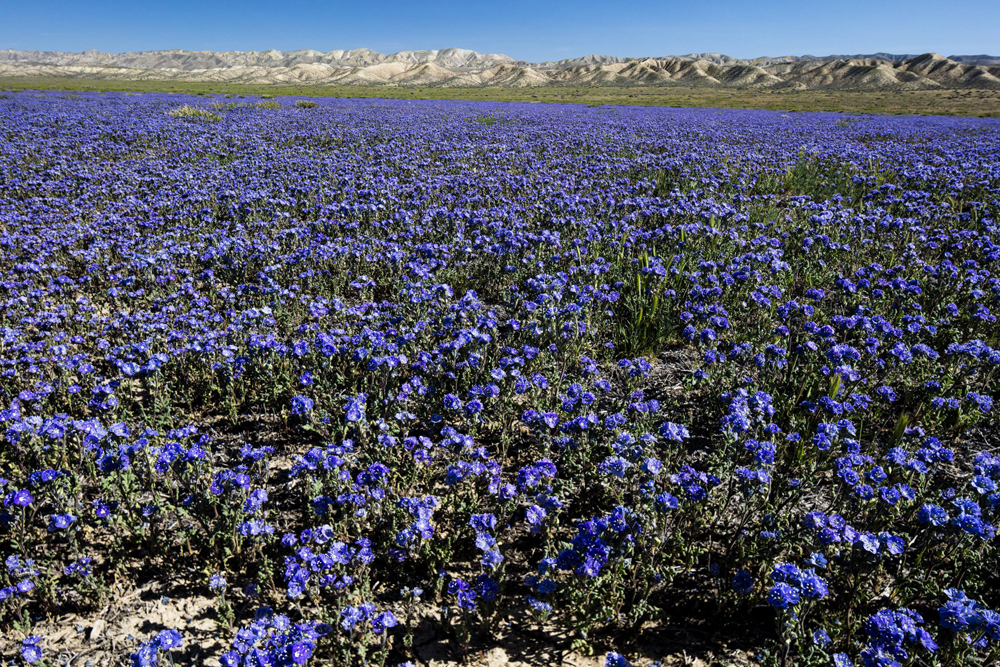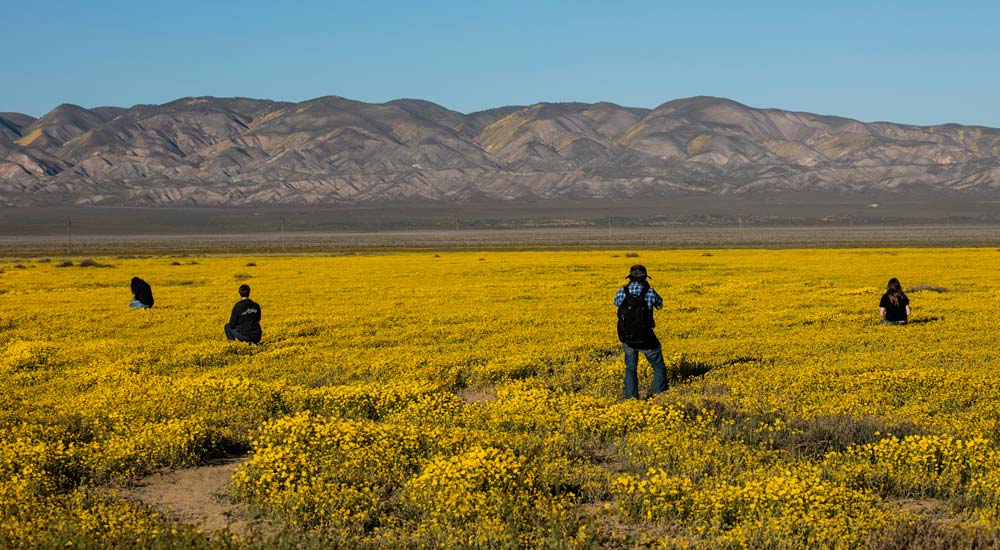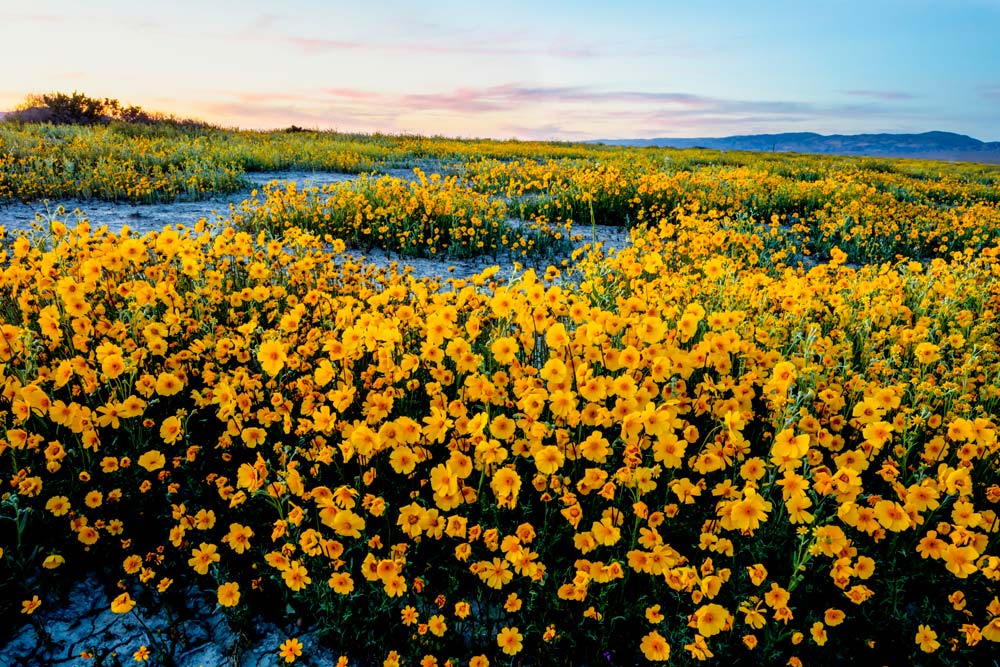
Bob Wick is a photographer and U.S. Bureau of Land Management (BLM) wilderness specialist. He contributed this article to Live Science's Expert Voices: Op-Ed & Insights.
California's Carrizo Plain is an amazing canvas for wildflower photography. The landscape is dominated by the white alkali flats of Soda Lake, Painted Rock, vast open grasslands and a broad plain rimmed by mountains.
When conditions are right in the spring, numerous wildflowers can carpet the valley floor — and although they're short-lived, they can be breathtaking. [See Wick's gallery: The Vibrant Wildflowers of Carizzo National Monument (Photos)]
I try to photograph wildflowers in the morning, before it gets windy. I also get low, shooting from a flower's height, or even looking up from below taller flowers, as that angle provides a fresh and interesting perspective.
I also use a very small camera lens aperture (f/16) to keep both the flowers and the distant landscape features in focus.
Don't shoot only with the sun behind your shoulder, either. Indeed, the reverse, or "backlighting" — shooting toward the sun, so that it shines through the petals of flowers — also can make for brilliant colors and add interest to your photos.
The photos in this essay and the gallery linked above were taken with a Canon EOS 5D Mark III with wide-angle lenses (a 16-35 mm zoom lens and 24 mm lens). Any single lens reflex camera would do the trick, and even point-and-shoot cameras or smartphones can take excellent wildflower photos.
Get the world’s most fascinating discoveries delivered straight to your inbox.
I always try to frame shots to give them depth; having a sweeping vista with a distant range of mountains is my favorite approach. Another composition tip to add depth and scale is to include people in the landscape — not as dominant features, but as secondary subjects. [Best Cameras for Your Needs]
Carrizo Plain, one of the best-kept secrets in California
Three hundred years ago, wildflowers swept the spring landscape of California's Central Valley where antelope and elk grazed.
Today, amid urban and agricultural development, the Carrizo Plain National Monument has been restored to its natural glory as part of the U.S. Bureau of Land Management's (BLM) National Conservation Lands.
Traversing this remote monument is the San Andreas Fault, which has carved valleys, and has created and moved mountains. Yet, up close, the landscape is a subtle alignment of ridges, ravines and (usually) dry ponds.
Only a few hours from Los Angeles, it offers visitors a rare chance to be alone with nature — you can "hear the silence." The plain is home to diverse communities of wildlife and plant species, including several listed as threatened or endangered, and it is an area culturally important to Native Americans.
An enduring wildflower season
California has an exceptionally long wildflower season, and the bloom seasons vary according to latitude and elevation. The earliest bloom starts in late January in the low deserts of southern California, while the bloom doesn't peak until mid-July in the high Sierra.
Wildflowers in the Carrizo Plain National Monument usually peak between mid-March and early April. This year's bloom is fading, but there is still some time to catch the tail end.
BLM's National Conservation Lands contain some of the West's most spectacular landscapes. They include more than 873 federally recognized areas comprising approximately 32 million acres of National Monuments, National Conservation Areas, Wilderness Areas, Wilderness Study Areas, Wild and Scenic Rivers, National Scenic and Historic Trails, and Conservation Lands of the California Desert — all belonging to us and the generations of Americans to follow.
Follow all of the Expert Voices issues and debates — and become part of the discussion — on Facebook, Twitter and Google+. The views expressed are those of the author and do not necessarily reflect the views of the publisher. This version of the article was originally published on Live Science .






